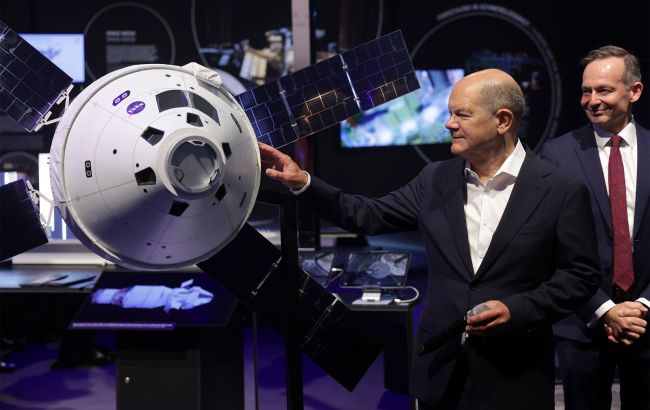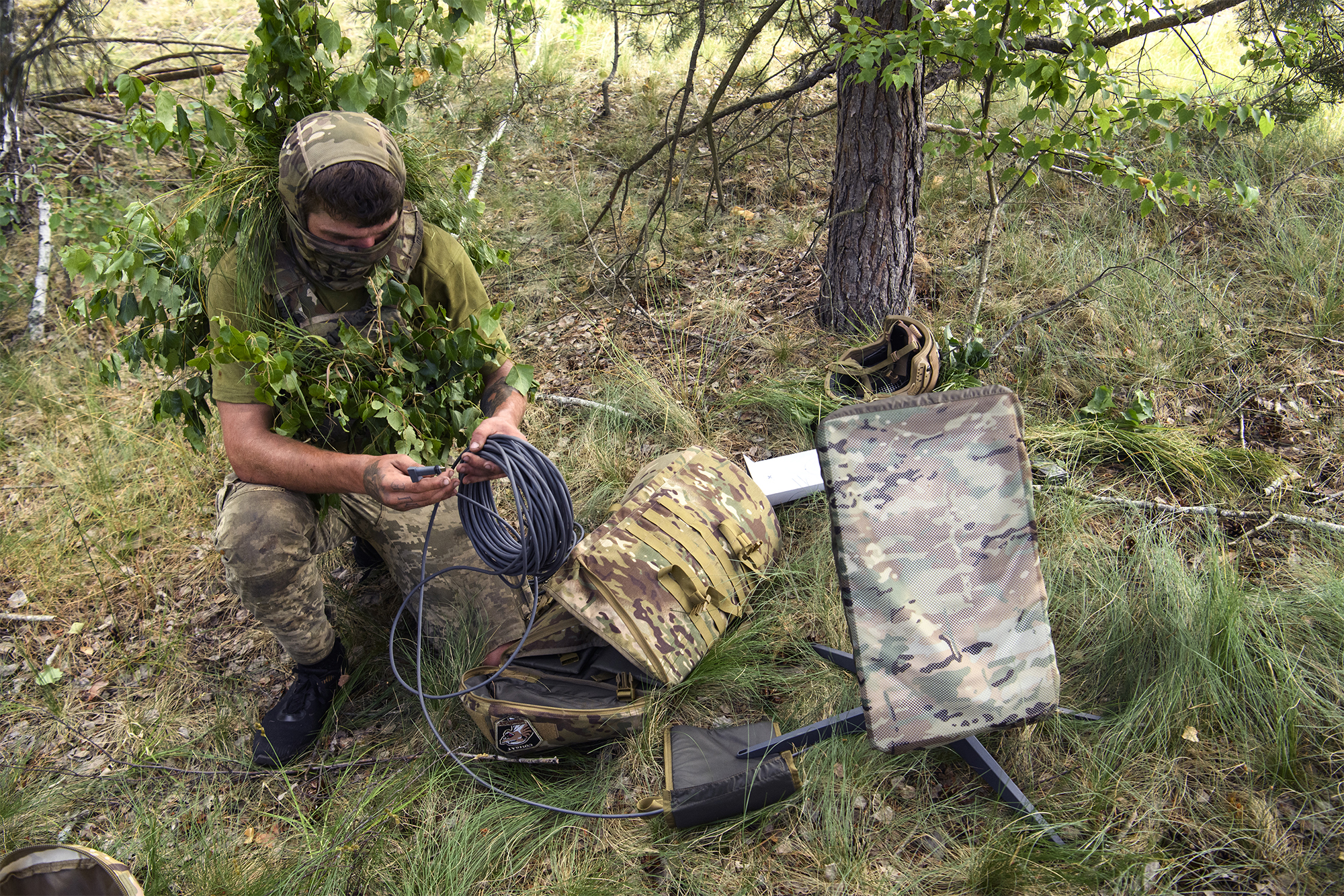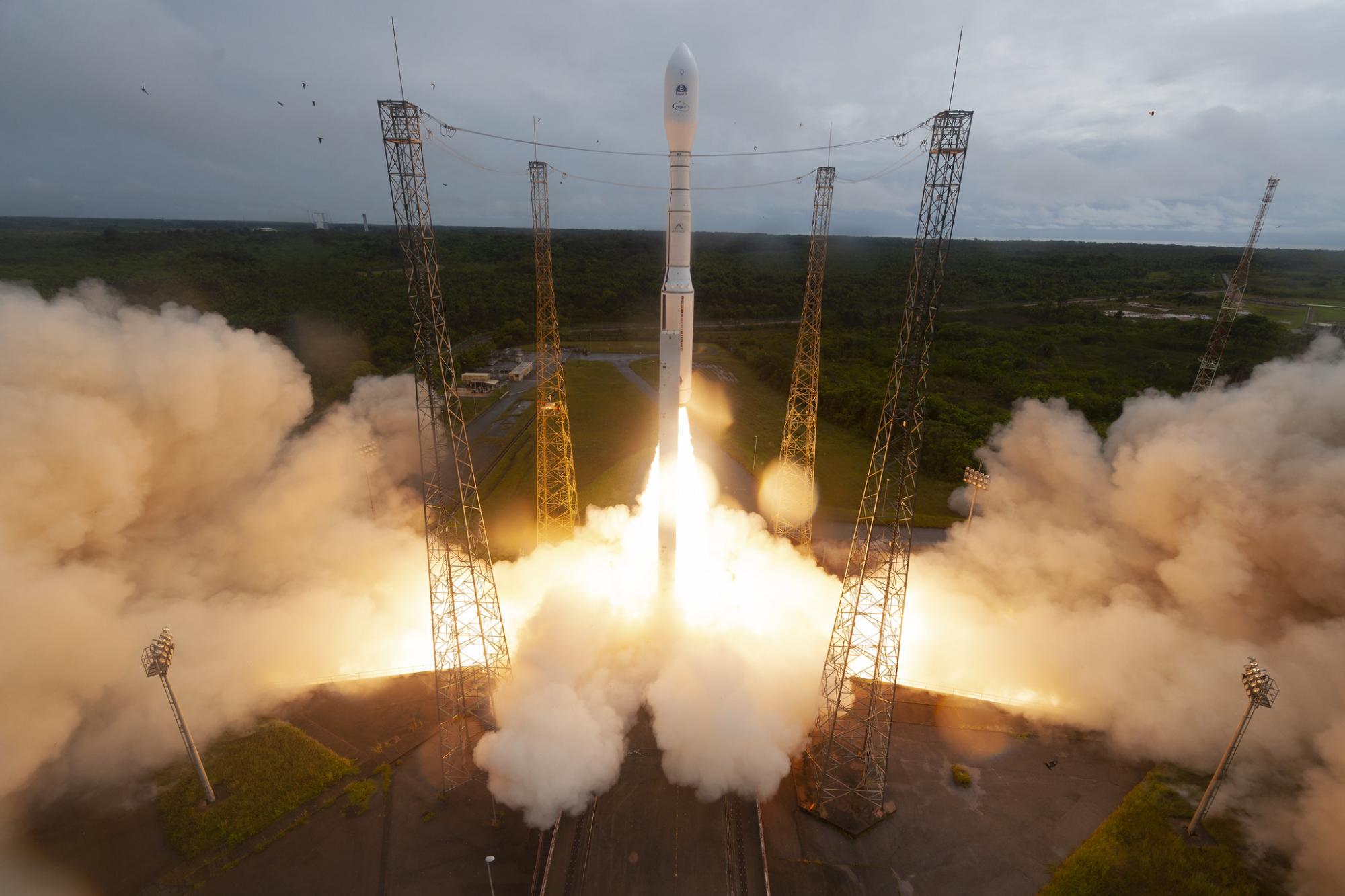Europe instead of Musk: Will Ukraine be able to find alternative to Starlink
 German Chancellor Olaf Scholz next to a model of the Orion ESM satellite (photo: Getty Images)
German Chancellor Olaf Scholz next to a model of the Orion ESM satellite (photo: Getty Images)
Ukraine is forced to look for alternatives to Starlink in the European Union, as the risk of its disconnection remains due to unstable relations with the United States. What European alternatives to Starlink might be, and how the EU is trying to develop its space industry?
Takeaways
- What are the alternatives to Starlink from European companies?
- Can Ukraine replace Elon Musk's product right now?
- Why can't Europe quickly increase its own capabilities in space?
- What is Ukraine's place in European space programs?
Relations between Ukraine and the United States remain extremely unstable. Any day now, new accusations may be made against the Ukrainian leadership from across the pond, for example, that Volodymyr Zelenskyy is to blame for the outbreak of war with Russia.
So, with the support of Europe, Ukraine is trying to achieve maximum autonomy from such an unpredictable partner. However, there are areas in which Ukraine, along with the rest of Europe, is critically dependent on the United States. These include satellite communications and intelligence.
Starlink and its alternatives
For the first time, information that the Trump team was considering cutting off Ukraine's access to Starlink communications systems appeared in late February, if Kyiv did not accept the US terms of the minerals access agreement. The extent to which Trump is willing to take such drastic steps has been shown by subsequent events. After the infamous quarrel in the Oval Office, the United States suspended military aid and intelligence for Ukraine for several days.
Although they were soon resumed, the conclusion from this situation is obvious: the United States cannot be relied upon with certainty. After all, there have already been cases when some terminals were blocked during military operations, particularly off the coast of Crimea.
The solution to this problem has several dimensions. Here and now, through political pressure and appeals to the business reputation of the Americans. After the news about the possible disconnection of Starlink, many European politicians warned Elon Musk, the owner of Starlink and a close ally of the US President, against such actions. Poland was particularly active, financing more than half of the terminals for Ukraine.
Although the company soon publicly stated that Starlink guarantees the continued provision of services in Ukraine, and any rumors to the contrary are categorically untrue, there is no absolute certainty about this. Therefore, the search for alternatives is in full swing.
"When it comes to Ukraine, we are ready to support the country with GovSatCom in the meantime, and will continue our discussions with Ukraine in this regard," Thomas Regnier, EU Commission Spokesperson for Tech Sovereignty, Research, Space and Defense, told RBC-Ukraine.
The official is referring to the EU's government satellite communications program. However, due to many technical features, this system can be used to a limited extent. For its wider application, it is possible to involve European private companies that provide satellite communications services.
First of all, it is Eutelsat with its OneWeb system. The company has been providing high-speed satellite Internet services in Ukraine for about a year now through a German distributor, with funds allocated by the German government. However, it cannot cover all the needs.
"If we were to take over the entire connectivity capacity for Ukraine and all the citizens, we wouldn't be able to do that. Let's just be very honest. But I do think we can provide capacity for some of the critical use cases of government," Eutelsat CEO Eva Berneke told Politico.
 A Ukrainian Armed Forces serviceman uses Starlink (photo: Getty Images)
A Ukrainian Armed Forces serviceman uses Starlink (photo: Getty Images)
Ukraine's Minister of Digital Transformation, Mykhailo Fedorov, said in early April that through cooperation with international partners and donors, Ukraine has received more than 50,000 Starlink terminals. However, The Wall Street Journal reports that Eutelsat can deliver only 5,000 terminals in a few weeks and another 5,000 within a year if the European Union gives permission.
Currently, there are about a thousand OneWeb terminals in Ukraine. In addition, they are larger and much more expensive than Starlink - the initial price starts at $3,200, while Starlink terminals cost less than $400.
According to official data, the Starlink network consists of about 7,000 satellites, while the Eutelsat fleet consists of 600. Musk's network can offer 23-490 times more data throughput for Ukraine than Eutelsat, depending on the usage scenarios.
"Whereas Starlink can be scaled up, i.e., simply by putting more and more satellites into orbit, this is not the case with EUTelsat. It is designed for a fixed number of satellites in orbit," Roman Khimich, a telecommunications market expert, told RBC-Ukraine.
In practice, this means fewer users and lower data transfer speeds. "Starlink has a network capacity that is an order of magnitude, if not more, higher than that of its competitors. Any alternative will mean that the number of consumers on the Ukrainian territory and the data transfer speed for each of them, both in aggregate and individually, will be significantly reduced," the expert said.
However, even a bad alternative is still an alternative. According to Khimich, some military units - but not all - have already taken care of duplicating communication channels.
"Smart people have been thinking about this for a long time and have already prepared, because on the battlefield, Starlink should not be unique due to many factors. Backup communication channels are not as powerful, not as convenient, but they can be done, and in some parts, they exist. Therefore, in the event of a Starlink outage, at least some of the Ukrainian military will be able to quickly or instantly switch to backup communication channels," Khimich told the agency.
At the same time, those units that have not taken care of this in advance may face problems. Therefore, according to the expert, after the news about the possible blocking of Starlink appeared, the market has seen a noticeable revival, interest in alternatives has increased, but everything rests on existing restrictions.
European space - what is the state of play?
In the long term, the European Union plans to deploy a full-fledged analog of Starlink. "The Commission recognizes the strategic importance of a sovereign, secure and robust European satellite connectivity capability for the EU’s resilience and autonomy, hence the very fast development of IRIS² supported by the co-legislators," Thomas Regnier told RBC-Ukraine. This is a multi-orbit satellite constellation that is supposed to provide a secure communications infrastructure for EU government bodies and agencies. According to him, discussions are currently underway at the EU level, with member states and industry.
To this end, at the end of last year, the European Commission signed a framework contract with the SpaceRISE consortium. It consists of three leading satellite operators - SES SA, Eutelsat SA, and Hispasat S.A.. However, the system is still under development. The first satellites are scheduled to be launched by 2027, and full operational capability is expected by the end of the 2020s.
As for the military sphere and American intelligence, Europe can only talk about their partial replacement.
"NATO's strategy is not to share, but to add data from national satellites. These data are combined for the needs of the alliance in the sense that they are provided by the United States and European countries, and then processed by the Joint Space Center, which is located at the well-known Ramstein base," Andrii Kolesnik, an independent expert on space activities, told the agency.
According to the UCS Satellite Database, as of 2023, the United States had up to 300 military and dual-use satellites. At the same time, European countries had up to 70 such satellites.
Why is Europe falling behind the US?
Europe's ability to catch up depends on its ability to launch new satellites. Until recently, the continent had big problems with this. In 2024, the European Union launched only 3 launch vehicles. For comparison, the United States launched 156, China 68, and even Russia 17.
This situation is due to problems with most types of launch vehicles. In general, they differ in terms of carrying capacity and ability to lift satellites to a certain height, Andrii Kolesnik told RBC-Ukraine. For example, due to Russia's full-scale invasion of Ukraine, the European Union stopped using Russian medium-class Soyuz launch vehicles.
"As for the light class, the Vega launch vehicle also suffered accidents, as did its modified version, the Vega C, which exploded more than once during launches. Thus, the operation of light-class rockets was temporarily suspended," Kolesnik explained.
The heavy-class Ariane 5 launchers are outdated and no longer in production, and the new Ariane 6 launchers have not been put into operation yet.
 Vega C launch (photo: Getty Images)
Vega C launch (photo: Getty Images)
However, these are temporary problems, Kolesnik said. The first, generally successful, launch of Ariane 6 took place in July last year. Similarly, in December, after the defects were eliminated, the use of Vega C was resumed. The European Union still does not have its own medium-class launch vehicles, but this gap is planned to be closed by modifying others. First of all, these are the more powerful Vega E and Ariane 6 in a less powerful configuration - A62.
Where does money for space come from?
The European space program can solve many problems. These are not only communication and military needs, but also weather observation, navigation, and much more. Therefore, both private and state-owned companies of the EU member states are actively working in this area. As in the US, European companies are mostly private. But they were not created from scratch, and are often privatized. At the same time, states usually retain a blocking stake in them. In particular, Italy and France have chosen this path.
Accordingly, funds can be taken from different sources. For example, the IRIS² project will be funded by the European Union, the European Space Agency (ESA) budget, and private investment.
In January of this year, European Commissioner for Defense and Space Andrius Kubilius said that spending in this area should be increased. By the way, this position in the European Commission was created only this year, which indicates that the EU realizes the importance of space programs.
European countries provide only 11% of global public funding for the space industry - 12 billion euros, while the United States invests 64% of the global total - more than 65 billion euros. The situation is similar to private investment. Europe is investing €980 million, which is significantly less than the €3.6 billion invested by the United States, showing a similar gap.
However, budget revisions in the EU are extremely slow. Kubilius emphasized that the European Commission expects to reach an agreement on new space funding in the next long-term budget (for 2028-2034), which will be discussed starting this summer.
The main problem with European space is that launch vehicles are de facto disposable, although some components can be reused. This increases the cost of launching cargo into orbit.
"Elon Musk has solved several problems that no one else has been able to solve before him. First of all, he brought to commercial operation the system of reusable launch and return of launch vehicles, which in turn led to an acceptable cost of launching one kilogram of payload into orbit," expert Roman Khimich told RBC-Ukraine.
As long as this gap persists, it is extremely difficult for European companies to compete with American ones, and creating their own analogs can be many times more expensive. Therefore, the solution lies in careful planning and understanding what exactly is needed within the available budget.
Over the coming years, the European Space Program will undoubtedly develop, which means prospects for Ukraine as well. "These are rocket engines, thermal control systems for spacecraft, for example, electric motors for spacecraft," emphasized Andrii Kolesnik.
According to him, these are the areas in which Ukraine remains competitive despite the war. In the future, they will allow Ukrainian companies to be involved in European space projects, albeit not at the forefront.
Sources: Statements by European and American officials, The Wall Street Journal, Bloomberg, Science Business, Handelsblatt, UCS Satellite Database, and comments by Thomas Regnier, Roman Khimich, and Andrii Kolesnik.

